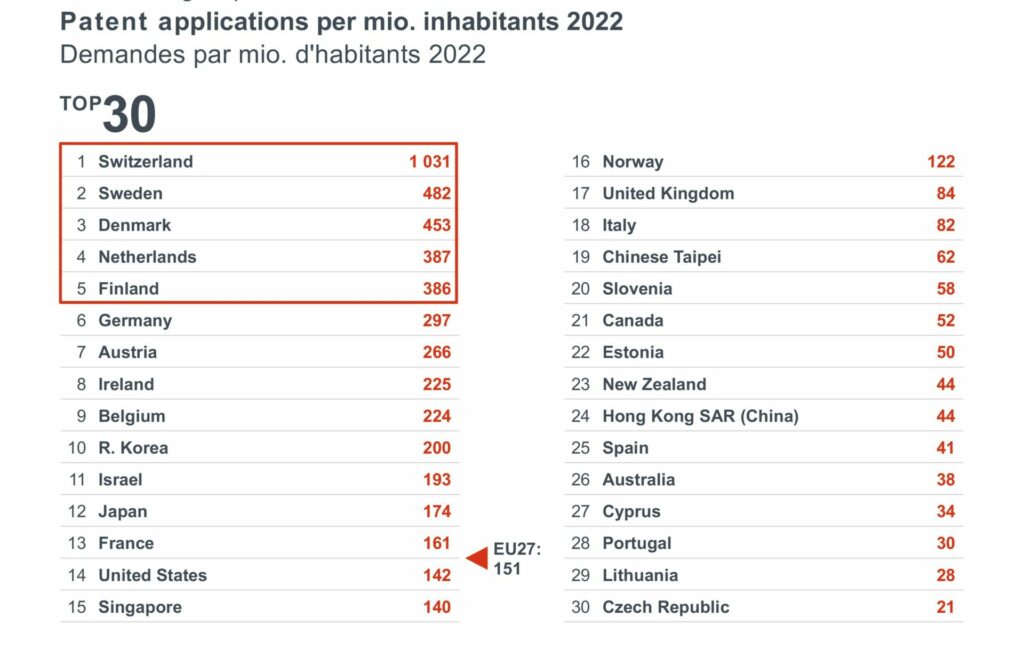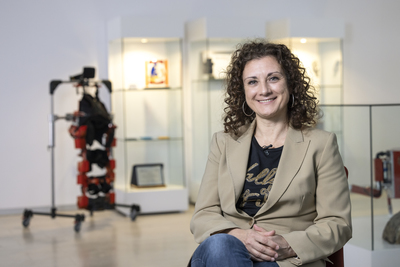The Patent Index 2022 shows that the number of patent filings continued to grow last year and reached over 193,000 applications after an increase of 4.7% from 2021, according to statistics recently released by the European Patent Office (EPO).
According to the figures, out of the total number, companies and inventors from the 39 EPO member states (among them all EU member states) filed ca 84,000 patent applications in 2022, accounting for 43 % of all applications worldwide. The number of patent applications is an early indicator of companies’ investments in R&D, explains EPO, showing that innovation remained robust last year despite the pandemic and economic uncertainties around the globe.
“When it comes to the promise of green innovation, there has been solid, sustained growth in filings related to clean energy technologies and other means that create, transfer and store electricity,” said EPO President António Campinos.
“It’s this ongoing boom that is navigating the energy transition. Innovators are also working towards a smarter future, as the fourth industrial revolution takes hold of our lives, sectors and industries – and spreads far into other areas from transport to healthcare. We can see this in the relentless growth in patent applications in digital technologies and semiconductors.”
Digital communication in the top
Digital communication (+11.2% from 2021) was once again the field with the highest number of patent applications at the EPO last year, followed closely by medical technology (+1.0%) and computer technology (+1.8%). The big increase in patent applications in digital technologies permeates other areas, such as healthcare, transport and agriculture.
European companies had the biggest share of applications in 7 of the top 10 technology fields at the EPO in 2022; leading in all but digital communication, computer technology and pharmaceuticals, where the US led. The fields with the biggest increases in applications from Europe among the top ten were computer technology (+11.5%) and biotechnology (+6.6%).
Huawei was the leading patent applicant at the EPO for the fourth time since 2017, followed by LG, Qualcomm, Samsung and Ericsson. The top ten includes four companies from Europe, two from South Korea, two from the US, and one each from China and Japan.
But patents are not only of interest to large companies. A significant proportion of the EPO’s applications come from smaller entities. In 2022 one in five patent applications to the EPO, from applicants originating in Europe, came from an individual inventor or a small or medium-sized enterprise (fewer than 250 employees).
Switzerland in the lead per capita
The top five countries of origin for patent applications at the EPO in 2022 were the United States (accounting for a quarter of the total), Germany, Japan, China and France (see graph Origin of applications). The growing share of applications to the EPO originating from outside Europe, however, highlights the attractiveness of the European technology market for companies from around the world.
Patent applications from the EU27 countries were down by -0.5% on average. Top 5 EU countries with the most inventions in 2022 were Germany, France, Netherlands, Sweden and Italy. The number of filings originating from the 39 European Patent Organisation countries were roughly at the same level as in 2021 (+0.1%), but their share of the total shrunk by a further percentage point to 43.4%.
Among other European countries with over 1 000 applications per year, the strongest growth came from Ireland (+12.3%), Belgium (+5.0%) and Austria (+3.4%). With respect to patent applications per capita, Switzerland was again the leader, followed by some of the Nordic countries (see graph Patent applications per million inhabitants).
This can be due to a number of factors, including the economic and industrial structure of Switzerland, Luis Berenguer, Principal Director of Communication at the EPO, told The Brussels Times.
“With fewer natural resources, the Swiss economy is based on a highly diverse industry being able to convert imported goods or raw materials into value-added products, often in the form of knowledge-based products and services. This necessitates a high level of education and a very intensive use of intellectual property rights to effectively protect these knowledge-based products.”
Large Swiss companies are very active in terms of patenting at the EPO; there is a strong R&D infrastructure, and co-operation between research institutions and universities and businesses, including SMEs. The fact that patent applications from Switzerland come from a wide range of fields, also gives the country a broad, diversified base and makes overall patenting activities very resilient.

European patent applications per million inhabitants in 2022, source: EPO
This is how the EPO works
The EPO is the executive arm of the European Patent Organisation, an international organisation with 39 member states, and one of the largest public service organisations in Europe. To handle the workload, the EPO employs some 6,300 staff, of whom nearly 4 000 are scientists and engineers working as patent examiners in all fields of technology.
European patents provide protection for inventions not only in the 39 EPO member states but also in five additional countries – one extension state (Bosnia and Herzegovina) and four validation states (Morocco, Republic of Moldova, Tunisia and Cambodia). For a list of all countries, see map.
How long time does it take to register a patent?
“The European patent grant procedure takes on average about three to five years from the date a patent application is filed and is made up of two main stages,” Luis Berenguer explained. “The first stage is an examination of formalities, incl. a preliminary opinion on whether the application meets the requirements of the European Patent Convention. The second involves substantive examination.”
Why are patent applications published only 18 months after the filing?
“The practice of publishing patent applications at 18 months after filing is a standard feature of many of the world’s patent systems. It represents a balance of interests between inventors and third parties, including the public.”
“On the one hand, 18 months is thought to represent a reasonable period of time after filing of the application for the inventor to make an assessment whether to continue prosecution of the application or to withdraw or abandon it. On the other hand, 18 months is believed to be a reasonable period of time for third parties to wait to obtain information about a new technology.”
The patent system plays an important role in stimulating innovation. Anyone can monitor developments in every case pending before the Office. EPO’s free online patent database Espacenet, provides access to over 140 million documents, making it one of the largest single sources of information about inventions and technical developments from all over the world.
What is the fee for a patent registration?
Fees are charged at various stages along the way. “As a rough guide, it currently costs on average about €6,000 to take a patent application through to the grant stage at the EPO. At the post-grant stage, competence is transferred to the contracting states designated in the European patent. In some contracting states, costs may be incurred for validation of the European patent there.”
In order to maintain the patent, renewal fees must be paid in each designated state in which the European patent has been validated. The overall cost of obtaining a European patent may also include fees for the services of a patent attorney. In total with attorney costs, translation costs, administrative fees for a patent kept over 10 years in about six European states it can cost around €30,000.
Is there still a need to validate patent applications separately in each country to obtain patent protection?
“The EPO examines applications for European patents centrally, saving inventors the cost of parallel national applications, while ensuring a high quality of granted patents. But granted European patents must still be validated and maintained individually in each country where they take effect. Validation requirements differ between countries.”
However, the innovation landscape in Europe will soon receive a major boost on 1 June 2023, Berenguer adds, with the launch of the Unitary Patent and Unified Patent Court.
The launch of the new system will provide companies and inventors with another option for patent protection in Europe. They will be able to obtain a Unitary Patent covering 17 countries at the outset (and in time potentially rising to 25 countries) via a single application and single renewal fee. The new system will bring down the costs for maintaining the patent significantly.
What is the difference between the EU Intellectual Property Office (EUIPO) and the European Patent Office (EPO)?
The EPO examines patent applications and grants European patents on the basis of the European Patent Convention which has 39 contracting member states. The EUIPO is responsible for the registration of the EU trade mark and the registered Community design, two unitary intellectual property rights valid across the 27 EU countries. The EPO, unlike the EUIPO, is not an EU body.
The European Court of Auditors (ECA) found in an audit of the EUIPO published in May 2022 that EU’s legal framework for protecting intellectual property rights could be more cost-effective. The scope of the audit was limited to EU trademarks, EU designs and EU geographical indications. Patents were not included in the scope of the audit because it was too early to examine this type of intellectual property rights.
M. Apelblat
The Brussels Times

